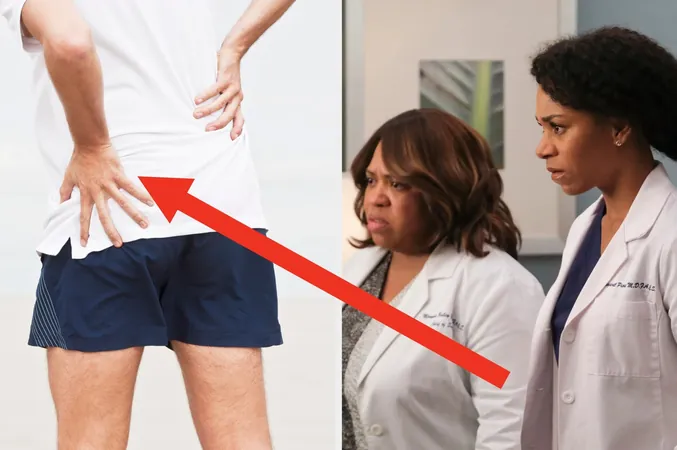
Stop Ignoring That Hip Pain! Insights from a Leading Hip Surgeon
2025-09-02
Author: Jia
The Silent Alarm of Hip Pain
Experiencing persistent hip pain can be alarming, especially as many folks leap to the conclusion that surgery is the only remedy. In the U.S., a staggering 544,000 hip replacements are performed annually, and a recent study reveals that 10% of the population suffers from hip pain, with the frequency rising as we age.
But hip issues aren’t exclusive to the elderly! Dr. Derek Ochiai, a renowned hip surgeon at Nirschl Orthopaedic Center in Virginia, highlights that increasingly, younger individuals are grappling with hip problems. In fact, a 2023 study found that a significant 22% to 55% of those reporting hip pain show signs of a labral tear, a condition often treated by Ochiai.
Why You Shouldn’t Delay Seeking Help
Many dismiss hip pain as a mere consequence of aging, but Dr. Ochiai warns that ignoring it could be a huge mistake. If you've been in pain for more than a few weeks, it's time to consult a physician. He emphasizes, 'If you're a young patient struggling to sit in a car for half an hour or taking tiny, cautious steps down a hallway, that’s not normal.'
Pain when sitting, driving, or even during intimate moments may indicate a serious hip joint issue. Delay could lead to arthritis, particularly if you have a labral tear, a common yet often unnoticed condition. Dr. Ochiai cites a Danish study showing that those with hip pain and impingement have a startling 26 times higher chance of developing arthritis within a decade than the general population.
Recognizing Concerning Hip Pain
Navigating the source of your hip pain can be tricky; pain may stem from various areas around the hip. Dr. Rahul Shah, an orthopedic spine surgeon, stresses that not all discomfort perceived as hip pain is rooted in the joint itself. It may be referred pain from surrounding muscles or even the lower back.
Typical signs of hip issues include pain during deep flexion exercises, difficulty standing on one leg, or struggling to put on socks or shoes. For a quick self-test, Dr. Ochiai suggests lying on your back, pulling your knee to your chest, and comparing the distance reached on both sides. A significant difference may indicate more than just stiff muscles.
Strengthening and Stretching for Relief
Dr. Ochiai recommends targeted exercises to relieve hip pain. Start by strengthening your core and glutes with Pilates or bodyweight squats. Yoga enthusiasts can also explore hip flexor stretches, knee and ankle mobility exercises to enhance overall hip function.
Finally, don't overlook the importance of stretching! Increasing your flexibility can significantly aid in achieving a full, pain-free range of motion. Combine these methods with a visit to your doctor for an in-depth evaluation, and you’ll be on your way to happier, healthier hips.


 Brasil (PT)
Brasil (PT)
 Canada (EN)
Canada (EN)
 Chile (ES)
Chile (ES)
 Česko (CS)
Česko (CS)
 대한민국 (KO)
대한민국 (KO)
 España (ES)
España (ES)
 France (FR)
France (FR)
 Hong Kong (EN)
Hong Kong (EN)
 Italia (IT)
Italia (IT)
 日本 (JA)
日本 (JA)
 Magyarország (HU)
Magyarország (HU)
 Norge (NO)
Norge (NO)
 Polska (PL)
Polska (PL)
 Schweiz (DE)
Schweiz (DE)
 Singapore (EN)
Singapore (EN)
 Sverige (SV)
Sverige (SV)
 Suomi (FI)
Suomi (FI)
 Türkiye (TR)
Türkiye (TR)
 الإمارات العربية المتحدة (AR)
الإمارات العربية المتحدة (AR)